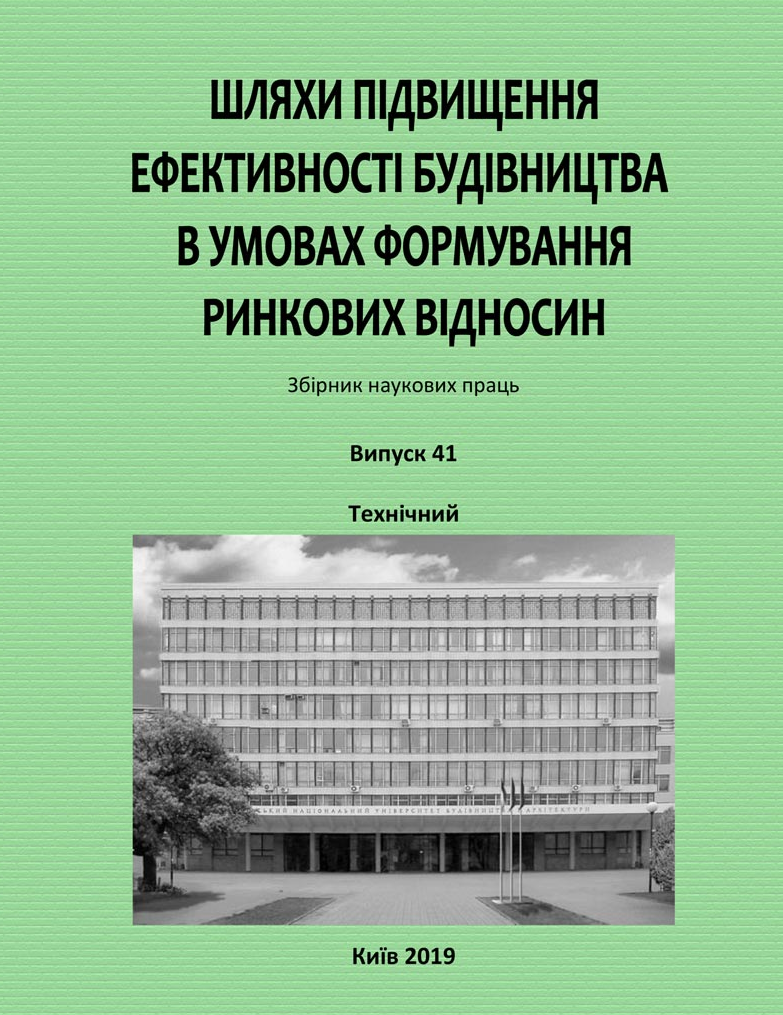The relevance of increasing the role of building materials in green construction
DOI:
https://doi.org/10.32347/2707-501x.2019.41.119-129Keywords:
energy saving, green standards, construction, greenhouse gases, autoclaved aerated concreteAbstract
The article shows the relevance of the implementation of "green" standards aimed at reducing energy consumption and improving the environment. The trends of temperature rise due to carbohydrate combustion emissions are shown, comparative parameters of conventional and green construction are given. It is argued that "green" construction should cover all stages of building and existence of a building: design, construction, operation, dismantling, recycling. A high level of comfort and safety, a low energy and resource consumption must be ensured at the construction stage, and at the final stage of the building operation all building materials must be recycled and reused. At the same time, an extremely important function is fulfilled by the regulatory framework in the construction industry, which has been updated with great delay (regulatory requirements) in Ukraine, compared with European countries.
The review of the main wall materials from the point of view of energy intensity of their production is given. The organizational and technological possibilities of increasing the role of autoclave aerated concrete in construction and the prospects of transition of low density aerated concrete production are revealed. An important role is played by the increase in the production of autoclave aerated concrete as a structural and thermal insulation and thermal insulation material, which contributes to the rational use of energy resources in construction indirectly leading to a reduction of greenhouse gas emissions. The priority directions for improving the production of autoclaved aerated concrete are given, namely: reducing the density of aerated concrete from D600 to D400 and to D300 provides a multifunctional effect, which consists of increasing the thermal resistance of a single-layer aerated concrete wall to the regulatory requirements (R ≥3,3 м2‧° С/Vt ), reducing the weight of the wall structure and load on the foundations, reducing material consumption and reducing by 22-30% the cost of cement and lime. Moving production to low density simultaneously solves several important issues related to energy and material savings, reduced greenhouse gas emissions and the cost of the building itself.
References
Kupchykova, N. V., Chumakova, A. V. (2014) Reitynhovaia otsenka ustoichyvosty sredы obytanyia zhyloho kompleksa po systeme «zelenoe stroytelstvo». Perspektyvy razvytyia stroytelnoho kompleksa. 345–350.
Hevyn, Shmydt (2019) NASA HYSS. URL: https://www.latimes.com/environment.
Korzun, V.A. (2012) Yzmenenyia klymata: prychynы, prohnozы, vozmozhnыe posledstvyia dlia myrovoi эkonomyky. M.: YMЭMO RAN.
Horshkov, A. S. (2010) Enerhoeffektyvnost v stroytelstve: voprosы normyrovanyia y mery po snyzhenyiu elektropotreblenyia zdanyi. Ynzhenerno-stroytelnyi zhurnal. 1. 9-13.
DBN V.2.6-31:2016. Teplova izoliatsiia budivel. (2017). Kyiv, Minrehionbud Ukrainy.
Horyn, V.M. (2010) Prymenenye keramzytobetona v stroytelstve - put k enerho - y resursoeffektyvnosty, bezopasnosty zdanyi y sooruzhenyi. Stroytelnye materyaly. 8. 8-10.
Schnejder M. (2015) Technology developments in the cement industry. Cement International. 1. 2-12.
Serdiuk, V.R., Rudchenko, D.H. & Avhustovych B.I. (2015) Osoblyvosti konstruktsii stiny z vykorystanniam nizdriuvatykh betoniv. Suchasni tekhnolohii, materialy i konstruktsii v budivnytstvi. 1. 33-38
Durov, V. V. (1998) Okhrana atmosfernoho vozdukha v tsementnoi promыshlennosty. Tsement y eho prymenenye. 6. 2-3.
Downloads
How to Cite
Issue
Section
License
Copyright (c) 2020 V. Serdyuk, D. Rudchenko

This work is licensed under a Creative Commons Attribution 4.0 International License.
Authors who publish with this journal agree to the following terms:
- Authors retain copyright and grant the journal right of first publication with the work simultaneously licensed under a Creative Commons Attribution License that allows others to share the work with an acknowledgement of the work's authorship and initial publication in this journal.
- Authors are able to enter into separate, additional contractual arrangements for the non-exclusive distribution of the journal's published version of the work (e.g., post it to an institutional repository or publish it in a book), with an acknowledgement of its initial publication in this journal.
- Authors are permitted and encouraged to post their work online (e.g., in institutional repositories or on their website) prior to and during the submission process, as it can lead to productive exchanges, as well as earlier and greater citation of published work (See The Effect of Open Access).

